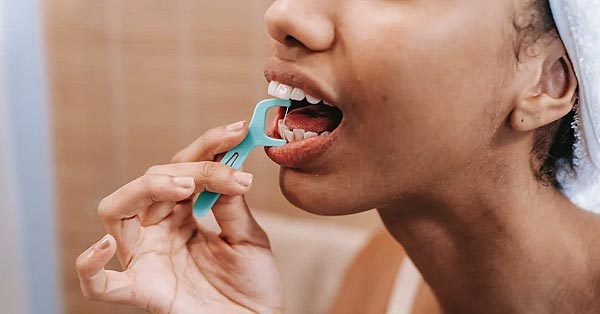Which comes first, brushing or flossing? New study shows that we should clean between our teeth before brushing
By: George Bushell, Oral Health Foundation
Brushing may come before flossing in the dictionary, but it shouldn't when it comes to our teeth according to the Oral Health Foundation! The Oral Surgery DC Team
That's because new research has shown interdental cleaning before brushing is the best way to clean our teeth effectively.
The study found that flossing loosens bacteria and food debris from between the teeth, which allows brushing to be much more successful at removing plaque.
Those that interdentally cleaned before brushing were left with a much cleaner mouth than those who did it afterward.
Dr. Nigel Carter OBE, Chief Executive of the Oral Health Foundation, believes the findings of the study illustrate why it is so important to make interdental cleaning part of our daily routine.
Dr. Carter says: "While brushing twice a day with fluoride toothpaste is absolutely essential for a good oral health routine, this study shows that interdental cleaning also has a big part to play when it comes to keeping our teeth and gums healthy.
"Brushing alone only cleans three of the five surfaces of our teeth, so cleaning between them before we pick up our toothbrush is hugely beneficial. It helps to prevent gum disease by removing plaque from areas the toothbrush alone cannot reach.
"It is a myth that having a good oral health routine begins and ends with brushing our teeth twice a day. This is simply not true.
"The importance of looking after the health of our teeth and gums by cleaning interdentally and then brushing cannot be stressed enough. Doing this alongside maintaining a balanced, low-in-sugar diet and regularly visiting the dentist will make us far less likely to encounter problems with our oral health."
The charity is keen to highlight the importance of a healthy mouth following a number of recent studies linking poor oral health to heart disease, diabetes, dementia, and even erectile dysfunction.
The Oral Health Foundation's Guide to Interdental Brushing>
Interdental brushes come in a range of different sizes, from as thin as 0.4mm to as thick as 1.5mm. Whichever one you have should be able to fit between your teeth comfortably, you shouldn’t have to use much force. You may find you need a couple of different sizes but the best way to find out is to ask your dentist or hygienist the next time you have an appointment.
- Hold the interdental brush between your thumb and forefinger.
- Gently place the brush through the gap between your teeth – don’t force the brush through the gap.
- Brush in and out of each space between your teeth.
The research, published in the Journal of Periodontology, also found that cleaning interdentally before brushing is better for our teeth because more fluoride is likely to remain in your mouth afterward.
"Fluoride is a natural mineral that protects teeth against tooth decay and reduces the amount of acid that the bacteria on teeth produce," adds Dr. Carter.
"Having great oral health doesn’t come down to any one thing. It is important to understand how the different choices you make each day can have an impact on the health of your teeth and gums."






4.9 Stars
based on 134 reviews
5 Stars
based on 11 reviews
5 Stars
based on 11 ratings